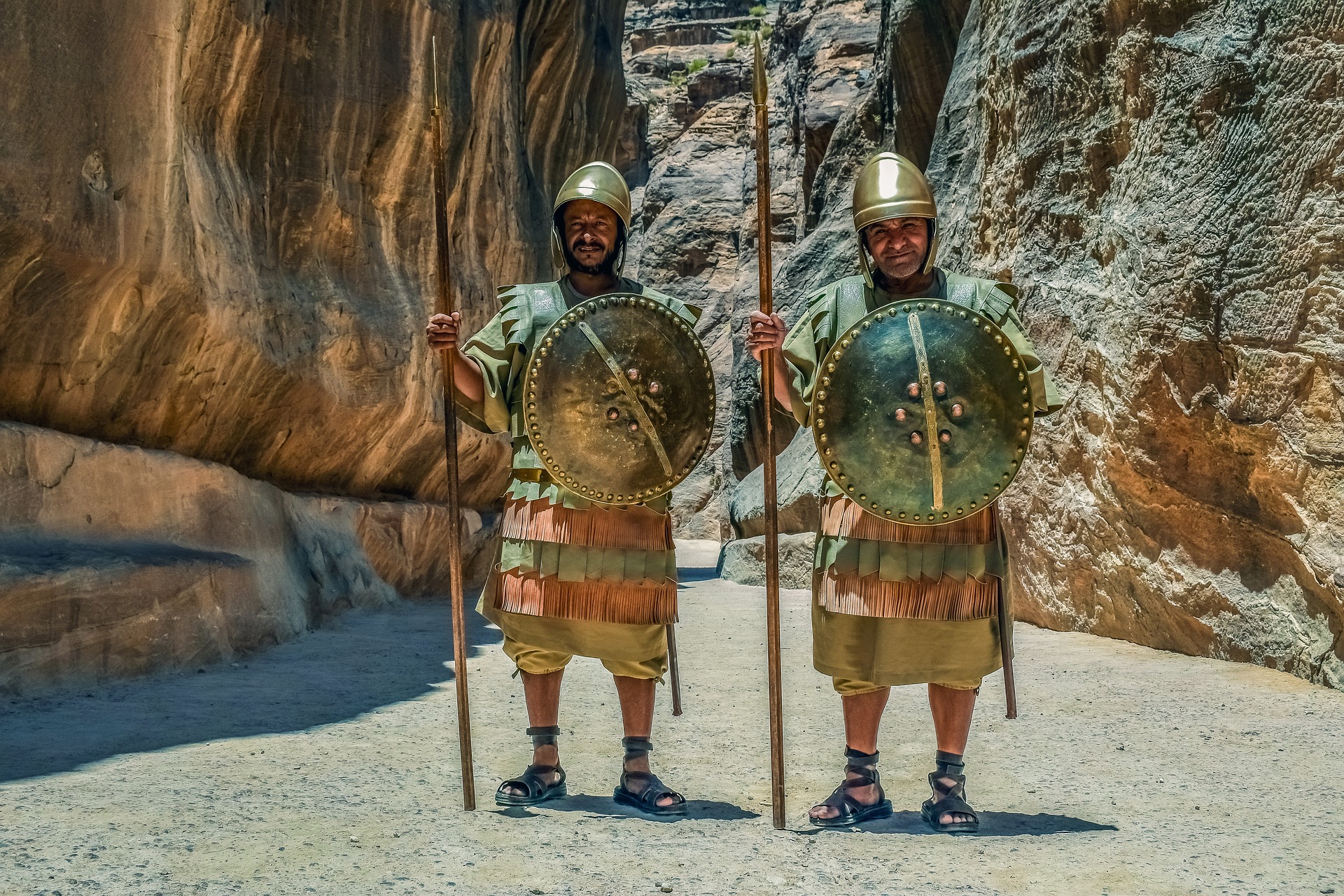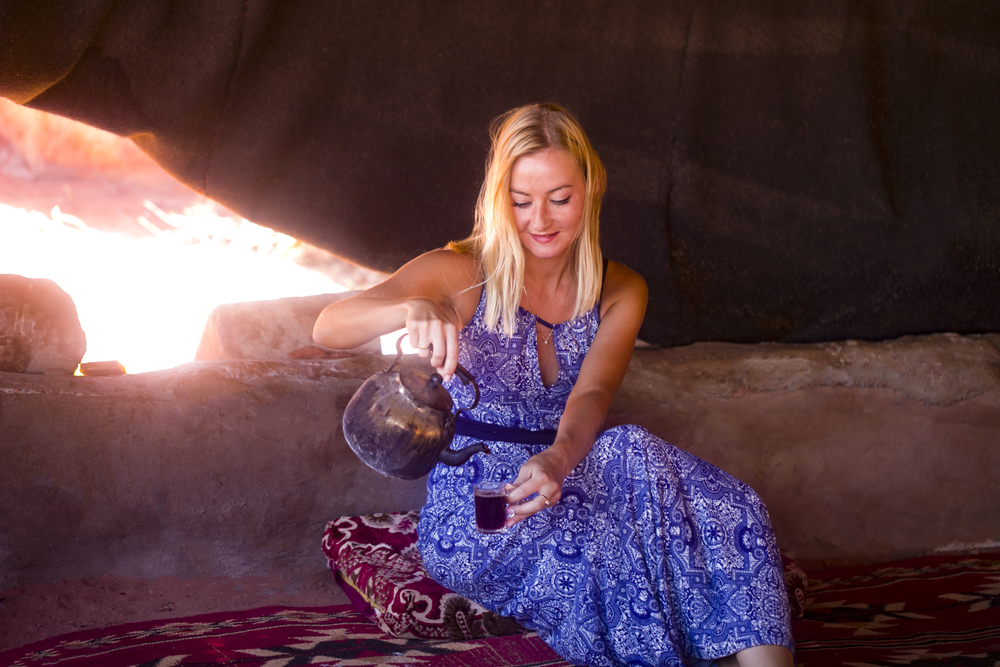How to Beat the Heat: Weather Guide to Petra, Jordan
Petra’s reputation as one of the modern wonders of the world is well-deserved: it’s not just a site of huge historic importance, it’s also extraordinarily beautiful - and no wonder so many people who take Israel and Jordan tours dedicate a day or two to see its timeless splendor.
And let me tell you: the Petra Archeological Park can be visited year-round. Located in the Jordanian desert, on the outskirts of a small village named Wadi Musa, it actually experiences all four seasons!
 The Siq in Petra, Jordan
The Siq in Petra, Jordan
So what kind of weather can you expect when visiting Petra? Let’s take a look at the average temperature across the calendar and what to expect when taking tours to Jordan at different times of the year.
Summer in Petra
There’s no denying it - Petra can be exceedingly hot in the summer. With temperatures soaring, the mercury can end up above 37°C (100°F) at the day’s peak and when the sun is blazing (and the humidity is rising), walking around can be quite arduous.
However, this doesn’t mean you can’t visit - it just means you need to be smart and plan ahead.
How to deal with the weather at Petra, Jordan
1. First of all, set off early. The gates to Petra open at 6 am in the summer which means that if you rise with the dawn, you can walk down the Siq passageway when it’s still quiet and be in front of the Treasury by 7 am. Not only will it be cooler, but you’ll also have incredible photographic opportunities.
And if you’re not an early riser, set off later in the afternoon - after 3.30 pm. By then, the majority of visitors will be leaving and not only will the sun’s rays be less intense, but you’ll be able to take advantage of the ‘golden hour’ when the colors of the rocks around you are constantly changing.
 The Sunrise over the Jordanian desert
The Sunrise over the Jordanian desert
2. Dress appropriately. We can’t emphasize this enough. Invest in a wide-brimmed hat, good sunglasses (the glare of the sun in the desert is notorious), and wear breathable fabrics. Comfortable footwear is essential (it’s a long walk to the Siq unless you want to travel there by donkey) and before you set off, apply plenty of sunscreen.
3. Drink water constantly. This is paramount. In the desert heat, you need to be drinking at least 3 liters of water per day. This may sound like a great deal but it isn’t. Carry water bottles and keep sipping, even when you don’t feel thirsty. Dehydration sneaks up on you and if you don’t take in enough fluids, you’re going to feel awful by the evening and - worst case scenario - end up with heatstroke.
 Drink as much as possible!
Drink as much as possible!
4. Take cooldown breaks. If you’re spending the entire day at Petra (rather than going early in the morning, then returning later in the afternoon), try and stay out of the sun between 11 am to 3 pm. This is when it is at its most intense. Inside the site is a restaurant called The Basin, which offers shaded, indoor dining with air-con. This is a good option for breaking up your day and taking some rest.
5. Visit Petra in the evening. Not that we don't think Petra is worth seeing in the day, but if you want to avoid the sun, go at night! Several times a week, the area in front of the Treasury is lit up by thousands of candles and it’s a truly incredible sight. Even though this is an additional cost to the ticket price, many find it to be a unique experience.
Fall in Petra
By the time summer has passed, the temperatures will be dropping again: Fall is a wonderful time to visit Petra. In September it will still be hot in the day (around 30°C/85°F) but pleasant in the evening. Moving into October, temperatures will still be moderate but will start to dip as the month progresses.
 Get some shade, and grab a drink - the Coffee is better than you've ever imagined
Get some shade, and grab a drink - the Coffee is better than you've ever imagined
By the end of the month, the skies may be a little bit more overcast but you still shouldn’t have to deal with rain. Nevertheless, you should definitely pack a warm jacket because by the evening it will be cold! Still, with median temperatures of 27°C (81°F), this is a very popular time for visitors. And even in November, although you might encounter some light rain, it’s still possible to hike and cycle around the site! Petra isn't too crowded during this season, so people who favor a relaxed atmosphere tend to book Petra tours from October to November.
Winter in Petra
Petra boasts a cold but reasonably dry winter climate. And even whilst there will be fewer hours of daylight than at any other time of the year, on a good day there might easily be 7 hours of sunshine! The average temperature throughout December - January will be around 14°C (57°F) but drop substantially at night - sometimes to between 0-2°C (32-34°F)
Just remember that however much the sun shines in the day, when night falls it’s going to be bitterly cold. You are, remember, in the desert! You’ll need a warm coat, gloves, hat, scarf, and even thermal underwear if you suffer from winter chills!
 The Petra Monastery in winter
The Petra Monastery in winter
Twice, since the 1960’s, Petra has flooded, which means the chances of having to deal with heavy downpours are unlikely but still possible
Rain is most likely in December but there won’t be enormous amounts - you’re far more likely to see frost on the ground. And the good news about traveling to Petra at this time of the year means there will definitely be fewer tourists.
Just remember that while the gates still open at 6 am in the winter, they close at 4 pm so plan ahead accordingly.
Spring in Petra
The beginning of spring - March - is a wonderful time to visit Petra. The sun will be shining brightly, wildflowers out everywhere you look and temperatures will be hovering between 18 to 24°C (64-75°F).
By April, spring will have arrived in earnest, and by May it will already be heating up. Still, this is a very popular time of the year to make a visit - the climate is almost perfect, being neither too cold nor too hot.
 The Petra Monastery during spring, with blooming Oleander bushes
The Petra Monastery during spring, with blooming Oleander bushes
In terms of exploring the lost city, the climate is perfect - not too hot and not too cold. The only possible drawback is being caught up in a ‘hamseen’ - a desert wind that blows across the Arabian peninsula at this time of the year. With it comes dust and sometimes dark skies, not to mention raised temperatures and sand flying everywhere. Luckily it tends to last just a few days, but it’s good to be prepared
Weather at Petra, Jordan: When should I come?
In conclusion, there’s no ‘one time’ of the year to visit Petra (or Wadi Rum, if you like camping, stargazing, and jeep trips) but the spring and the fall are undoubtedly the best months to make a trip. Because the weather is cooler but not too ch ur blog.
 Login / Register
Login / Register
 Contact Us
Contact Us
 Certificate of Excellence
Certificate of Excellence Guaranteed Departure
Guaranteed Departure Low Prices Guaranteed
Low Prices Guaranteed 24/7 Support
24/7 Support




